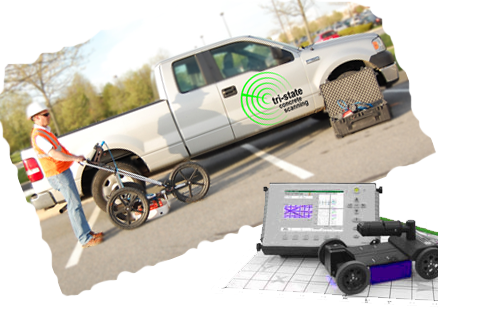RainierGPR Service Areas: Comprehensive Insurance Coverage for Concrete Scanning
Concrete Scanning: A Critical Action Towards Making Certain Architectural Integrity and Safety And Security
In the world of building and construction and infrastructure maintenance, the value of concrete scanning can not be overemphasized. By employing sophisticated technology and approaches, concrete scanning offers as a crucial tool in guaranteeing that the stability and safety and security of structures and bridges are upheld to the highest possible standards.
Importance of Concrete Scanning
Concrete scanning plays a crucial function in ensuring the architectural honesty and safety of buildings and infrastructure tasks. By utilizing sophisticated technologies such as ground-penetrating radar (GPR) and electro-magnetic induction, experts can non-destructively examine concrete frameworks to identify potential flaws, spaces, embedded objects, and reinforcement format. This process allows very early detection of abnormalities that can jeopardize the security of a structure, stopping pricey damages and ensuring the safety and security of owners.
Concrete scanning is specifically necessary throughout the planning and building phases of a project. Before drilling, reducing, or coring right into concrete, scanning assists identify the exact areas of rebar, post-tension cables, and various other embedded elements, decreasing the threat of unintended hits that could result in structural weaknesses. Additionally, concrete scanning help in quality control by validating the thickness of concrete covers and finding any disparities that might impact the general longevity of the structure. Ultimately, purchasing concrete scanning solutions is not just a proactive measure to reduce dangers but likewise a basic action in the direction of keeping the lasting safety and security of buildings and infrastructure.
Technology for Concrete Evaluation

Advantages of Early Detection
Prompt detection of architectural problems can considerably alleviate threats and make certain the durability of construction jobs. By identifying prospective problems beforehand in the building and construction procedure, stakeholders can take proactive measures to resolve concerns before they intensify into larger and extra expensive problems. One of the key advantages of early discovery is the avoidance of architectural failings, which can pose serious safety and security hazards and lead to task delays and monetary losses.
Moreover, early discovery permits timely repairs and maintenance, which can aid expand the lifespan of the framework. By dealing with problems promptly, building and construction groups can stay clear of pricey fixings and even the demand for early replacement of structural elements. This aggressive approach not just conserves time and money however likewise improves the general safety and security and resilience of the building and construction task.
In addition, very early discovery can boost task planning and decision-making by providing stakeholders with beneficial insights right into the problem of the framework. Equipped with this info, task managers can make enlightened options regarding construction techniques, timelines, and products, bring about a lot more effective and reliable task outcomes.
Making Sure Architectural Security
Guaranteeing the structural security of a building task is critical to its safety and long life. Structural stability describes the capability of a building or infrastructure to maintain its kind and feature under ecological conditions and numerous tons. To attain this, comprehensive evaluation and tracking of the framework are essential. Concrete scanning plays an important duty in guaranteeing architectural stability by spotting potential concerns such as voids, delamination, or reinforcement deterioration that could read more jeopardize the honesty of the structure gradually.
By making use of advanced scanning innovations like ground-penetrating radar (GPR) and electromagnetic induction, building and construction specialists can non-invasively inspect concrete frameworks to recognize locations of problem below the surface. This positive method enables the early discovery of weaknesses or defects, making it possible for punctual repair services or reinforcement to prevent architectural failures.
Regular concrete scanning throughout various building and construction stages and throughout the life process of a framework can aid preserve its security, reduce dangers, and guarantee the safety and security of residents. By focusing on structural stability via concrete scanning, construction jobs click resources can improve their strength and resilience, eventually adding to better safety and long life.

Preventing Critical Failings
To safeguard versus disastrous occasions, careful tracking and proactive upkeep are important in preventing vital failures within structural structures. Detecting prospective concerns prior to they escalate is essential to stop structural failings. Applying regular inspections, such as concrete scanning, can disclose covert issues like gaps, splits, or corrosion that might jeopardize the integrity of a framework. By using sophisticated scanning modern technologies like Ground Permeating Radar (GPR) or Concrete X-ray, designers can non-destructively evaluate the condition of concrete and identify weak points that call for support or repair work - RainierGPR Service Areas.

Final Thought
In conclusion, concrete scanning plays a critical function in ensuring architectural integrity and safety by utilizing sophisticated technology for very early discovery of prospective problems. This aggressive technique assists stop essential failings and ensures the security of frameworks. It is necessary to prioritize concrete evaluation as a conventional method to protect the durability and safety and security of buildings and facilities.
Concrete scanning plays an essential duty in making certain the architectural stability and security of buildings and infrastructure projects. In addition, concrete scanning aids in top quality control by verifying the density of concrete covers and discovering any type of disparities that might impact the total sturdiness of the structure. Concrete scanning plays an important function in making certain architectural security by finding prospective issues such as gaps, delamination, or support deterioration that could compromise the integrity of the structure over time.

In conclusion, concrete scanning plays an important function in making sure architectural honesty and security by making use of innovative technology for early detection of potential issues.